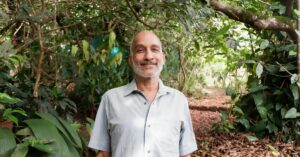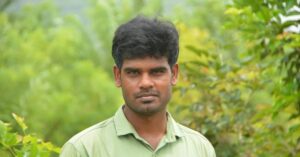This Architect Has Mastered the Use of Sustainable & Eco-Friendly Materials in Construction
The construction sector contributes to about 22% of India’s total annual CO2 emissions. Keeping this grave reality in mind, it is important that more architects, like Trupti Doshi of Mumbai, resolve to use eco-friendly building techniques.
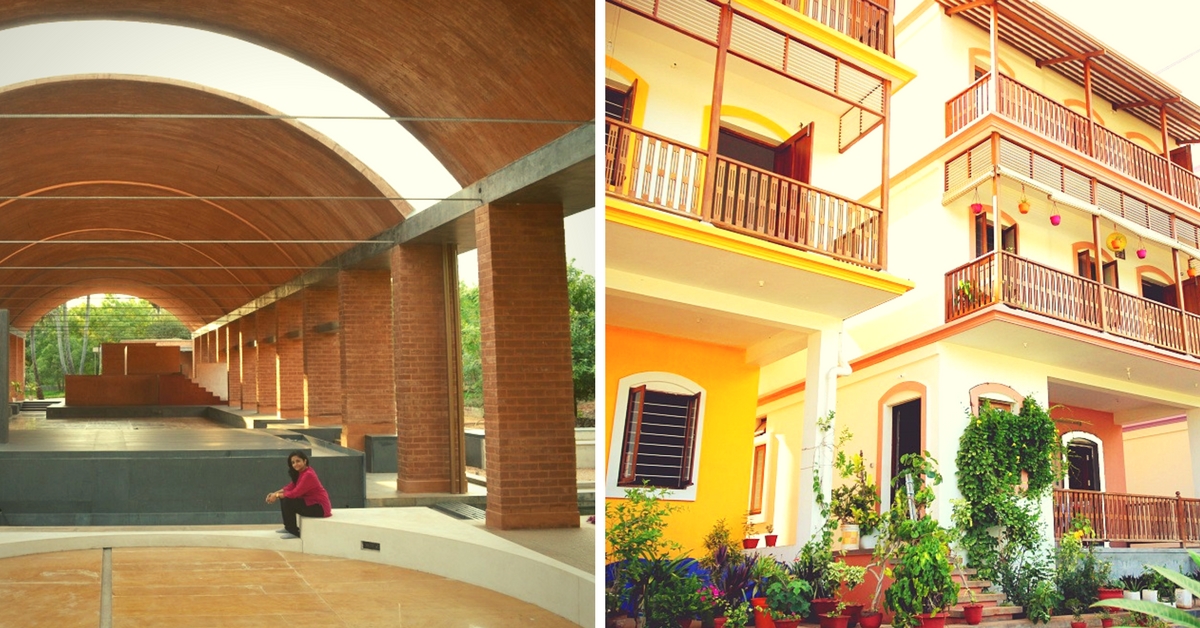
The construction sector contributes to about 22% of India’s total annual CO2 emissions. Keeping this grave reality in mind, it is important that more architects, like Trupti Doshi of Mumbai, resolve to use eco-friendly building techniques.
Trupti Doshi, an architect from Mumbai, says she was beyond shocked when, during a humanities class in college, she came to know about the “catastrophic levels of social and ecological devastation” that a construction project can lead to. So she set about learning more about the levels of pollutants released into the environment when conventional buildings come up. “That knowledge was extremely disturbing for me as a 20-year-old. I decided that I can’t follow a career on the beaten track; I had to do something different,” says Trupti.
Today, after having successfully completed a rural development centre using sustainable materials, she has co-founded her own company and works on constructing eco-friendly buildings.
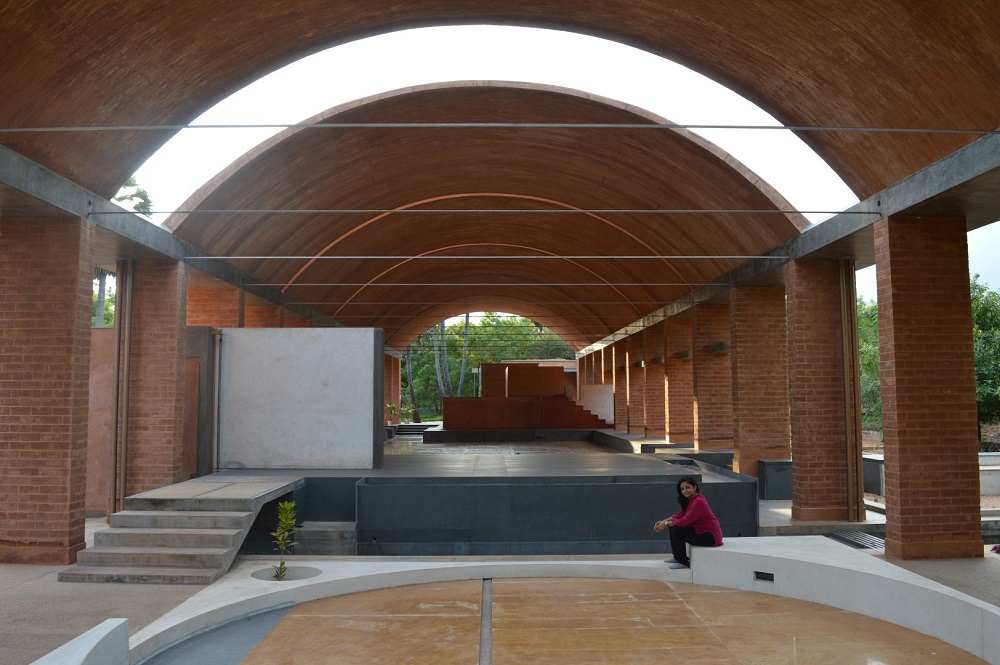
Trupti started working on the Sharanam Rural Development Centre along with architect Jateen Lad, the Chief Co-Architect at Sri Aurobindo Society, the NGO wing of Sri Aurobindo Ashram in Pondicherry. This centre for rural transformation is spread across five acres of land on the outskirts of Pondicherry. What’s unique about the project? The entire building, from pillars to roof, is made of unfired earth. This means that the primary building material is the very soil the Centre stands on.
The campus has multiple buildings – like a hall, offices, kitchen, etc., and they are all built using the very same earth.
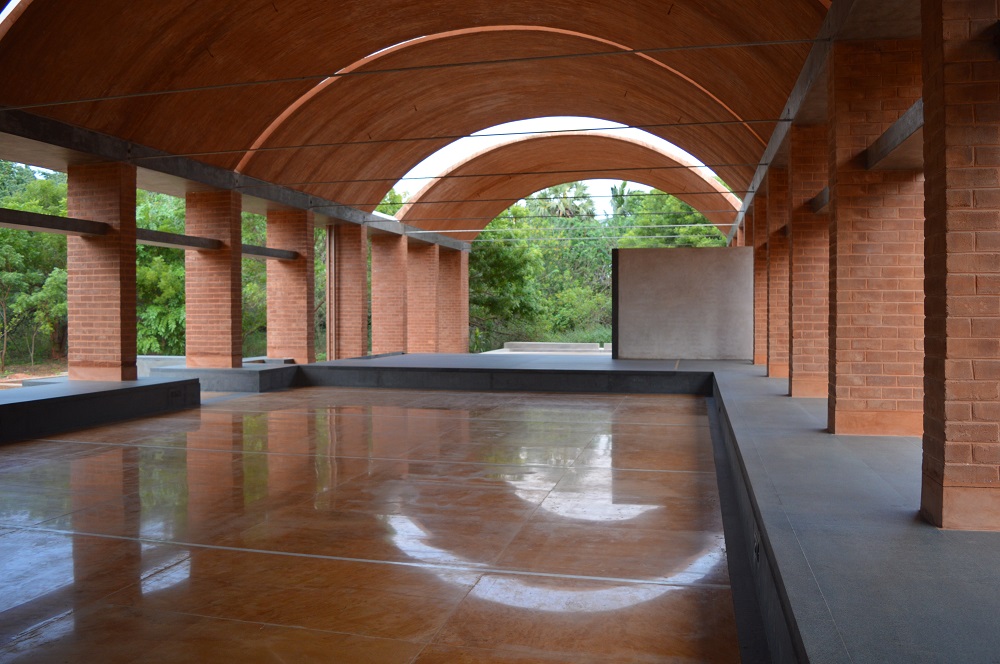
Explaining the process of construction, Trupti says she began with a topographical survey to select the region with the lowest contour. This area was dug to form a pond so that rainwater would flow in that direction and collect in the pond. The soil obtained from digging was then used to make Compressed Stabilised Earth Blocks (CSEBs) to construct the building. The process of manufacturing CSEBs does not require firing or baking like conventional fired bricks. It just needs compression, following which the bricks are kept wet for about a month and then sun dried for three months. The use of such bricks helps counter pollution. According to Trupti, 99.9% of the buildings in India are made with fired bricks; this leads to the depletion of the fertile soil underneath. Moreover, brick-making in itself is a highly polluting industry.
The team had decided from the beginning that they would minimise the use of steel and cement on the campus.
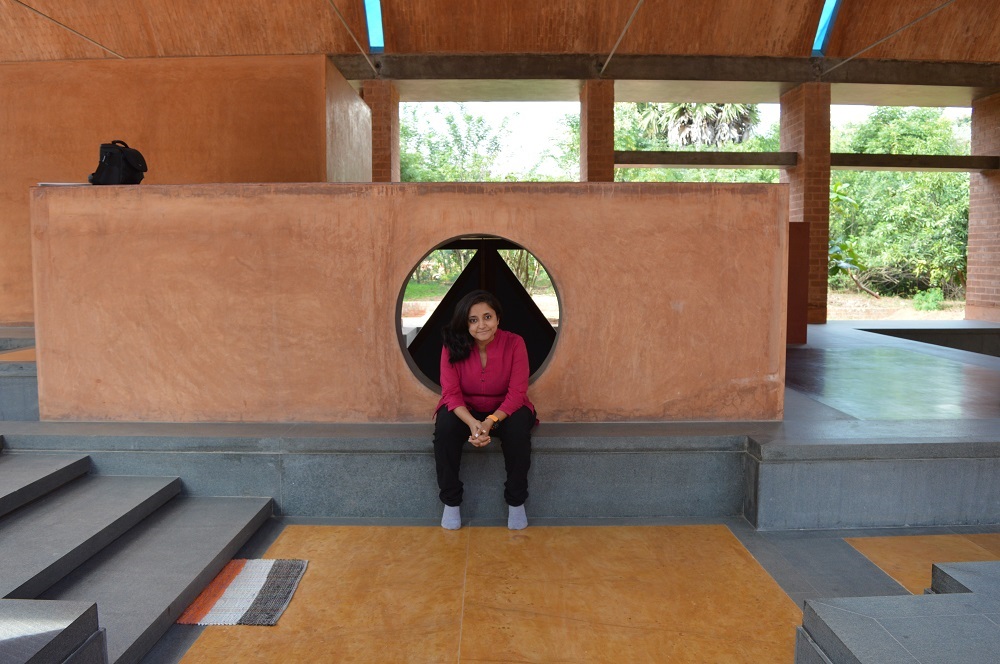
“Sharanam is sustainable on all fronts – not just in terms of water, waste, and energy that most construction projects concentrate on. We have worked on everything – right from the building material and where you get the building material from, to how you can reduce the need for transportation and avoid carbon emissions,” says Trupti.
Trupti and her co-architect employed and trained over 350 people from 40 neighbouring villages to work on this project. “Many of them were alcoholic men with no source of income. Today, they are specialised masons, carpenters, and people with high-skills in the building trade,” she says.
The campus helps conserve water and energy as well. “Every drop of water falling on this land or on the roof of the building is collected, recycled and reused. The organic waste is also composted and used as fertiliser,” says Trupti, adding that the building is designed in a way that it provides thermal comfort and a fan is not required in the main hall that has the capacity to accommodate 350 people.
The cost of construction was 40% cheaper than conventional concrete buildings.
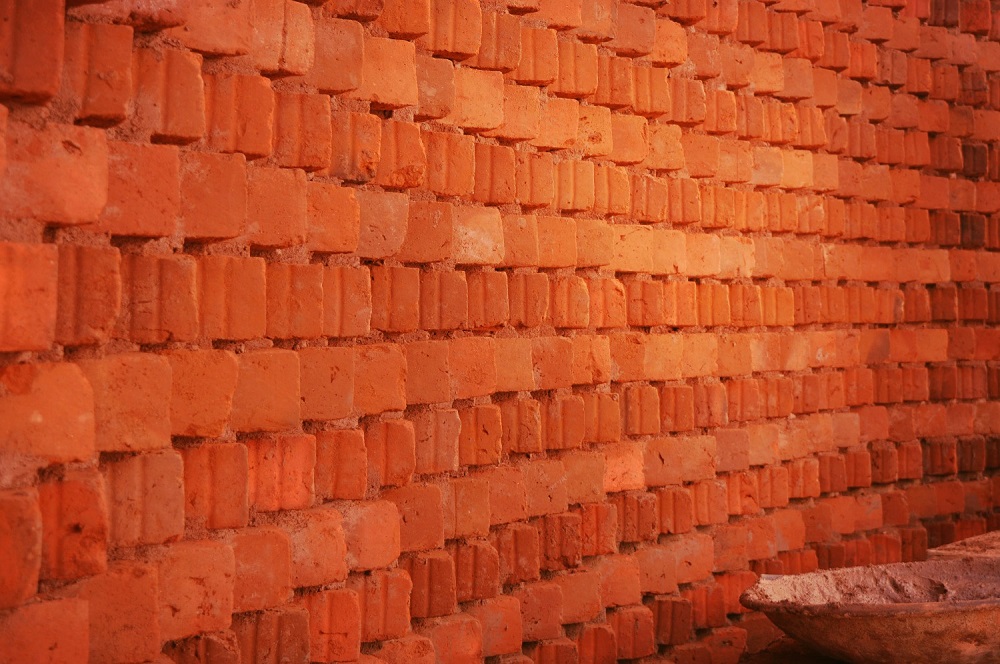
The development centre serves as the venue for several activities in the village. And the United Nations Environment Programme has recognised it as a model for sustainable development in India.
Sharanam was ready in 2013, after which Trupti went on to co-found the Auroma Group with her brother Viral Doshi. This is an architecture company that works on residential and office space construction with an eco-friendly model. “Auroma is about how we can build places for communities that share an ideological connect and are willing to participate in the creation of a sustainable environment together. So we work on everything – the master planning, sustainability engineering, design, furniture, etc. The A-Z of design.”
Auroma’s flagship project, the Auroma French Villament, is a gated-residential society located between Pondicherry and Auroville.
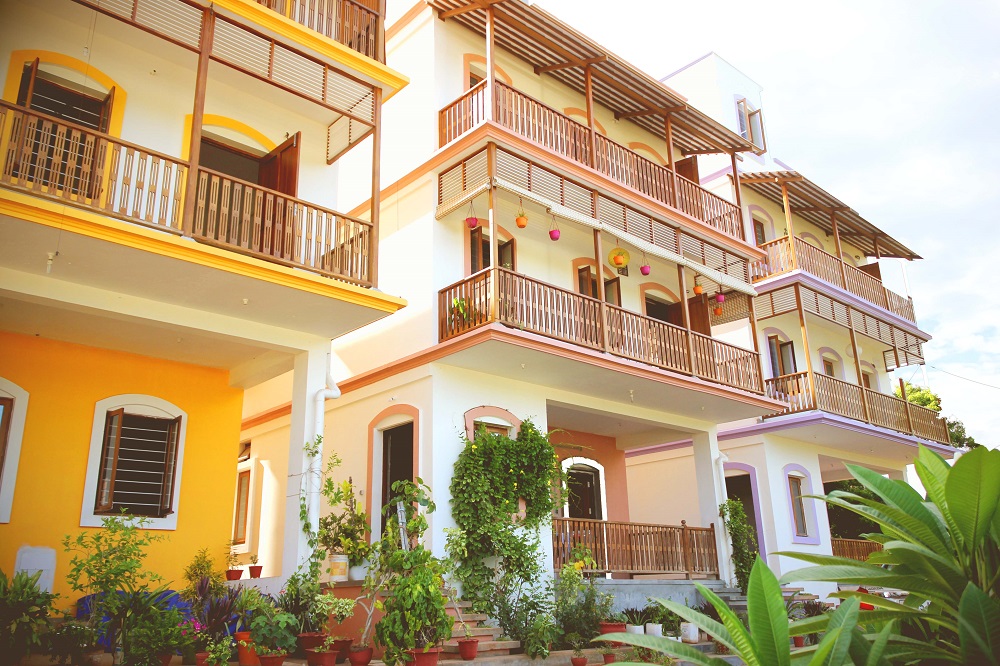
The houses in this project are made from fly ash bricks.
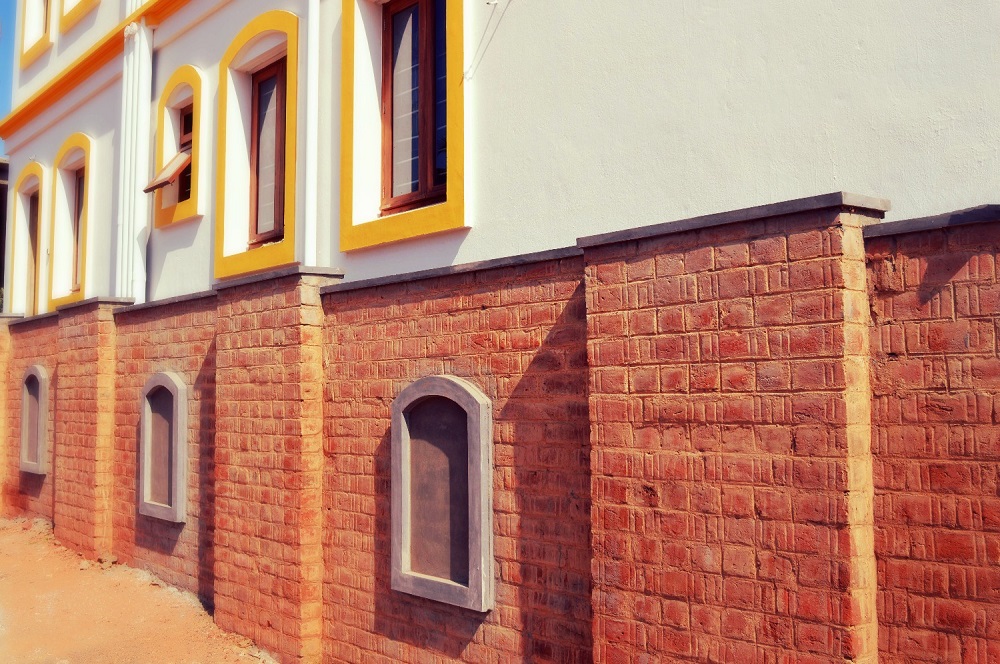
“Fly ash can be an excellent building material but can cause a lot of pollution if it goes to waste,” says Trupti, who has a team of 49 people. Everyone, right from the construction workers to the designers, is trained by the co-founders.
“I feel that Mumbai, and most cities in India are highly influenced by the concept of square feet. Square feet become the measure of your standard of living. That was one idea in life that I did not agree with. If you follow the norm of packing life into square feet, then you will only have storage boxes. You cannot have architecture that enhances the quality of life,” she concludes.
Know more about her projects here.
Like this story? Or have something to share? Write to us: [email protected], or connect with us on Facebook and Twitter.
NEW: Click here to get positive news on WhatsApp!
This story made me
- 97
- 121
- 89
- 167
Tell Us More
We bring stories straight from the heart of India, to inspire millions and create a wave of impact. Our positive movement is growing bigger everyday, and we would love for you to join it.
Please contribute whatever you can, every little penny helps our team in bringing you more stories that support dreams and spread hope.






